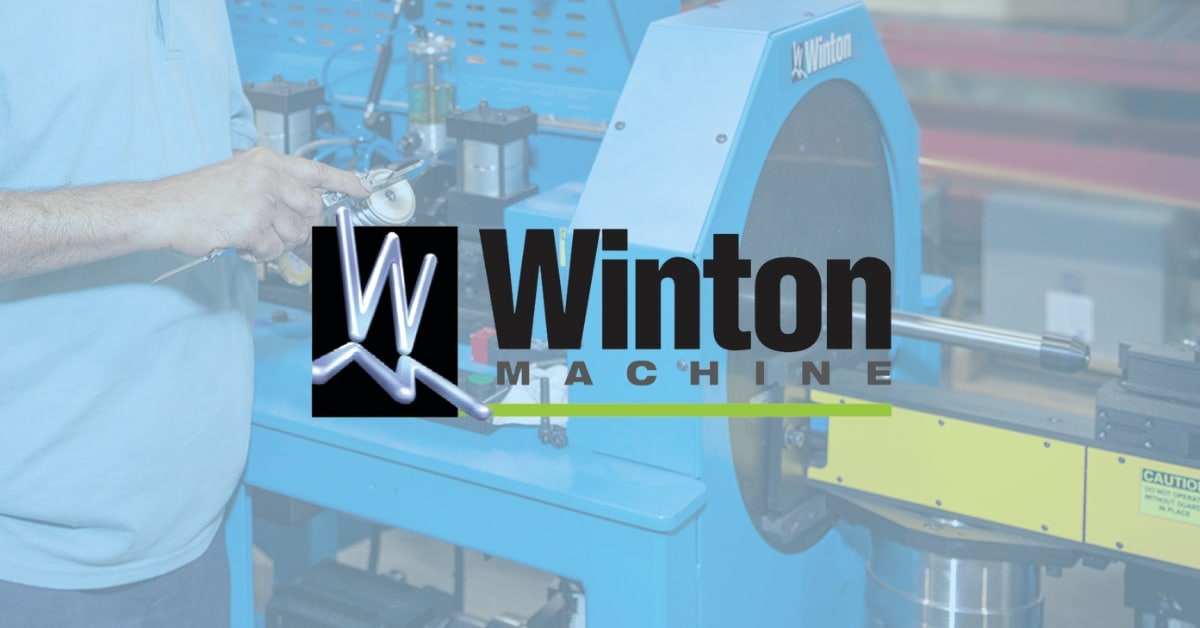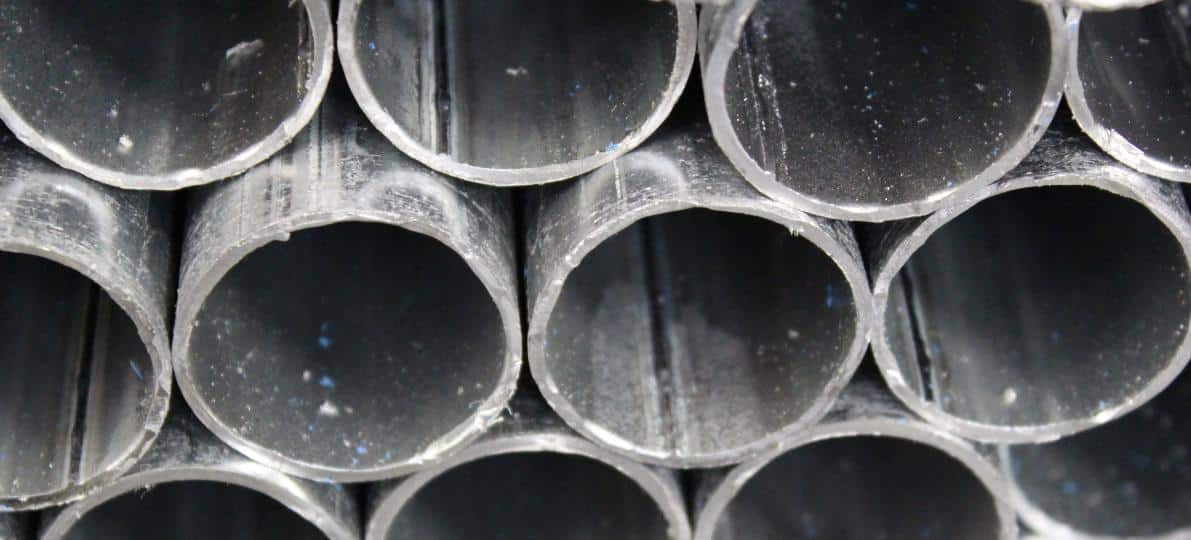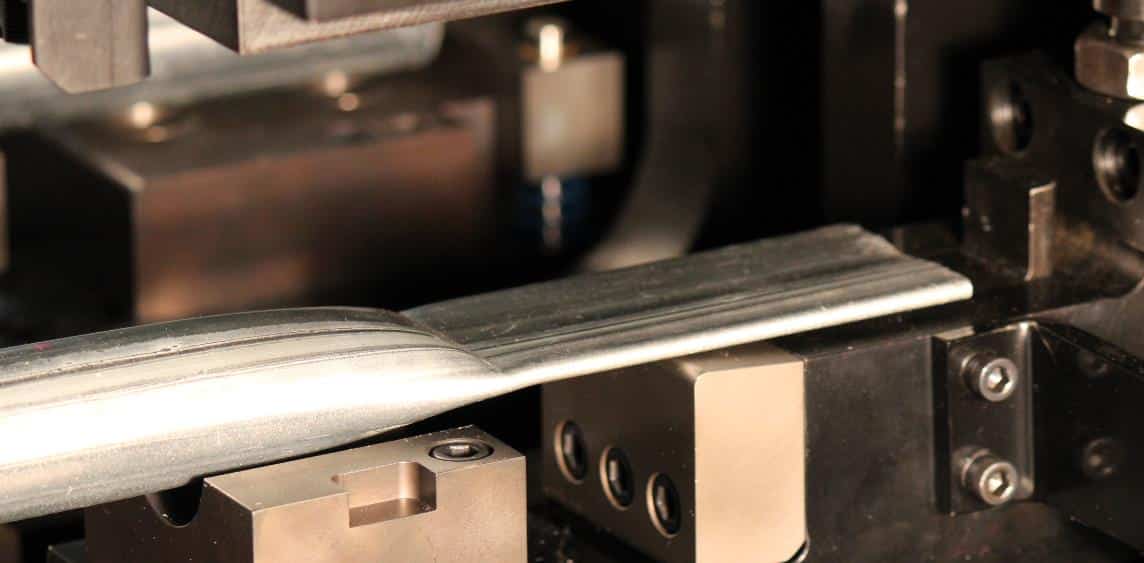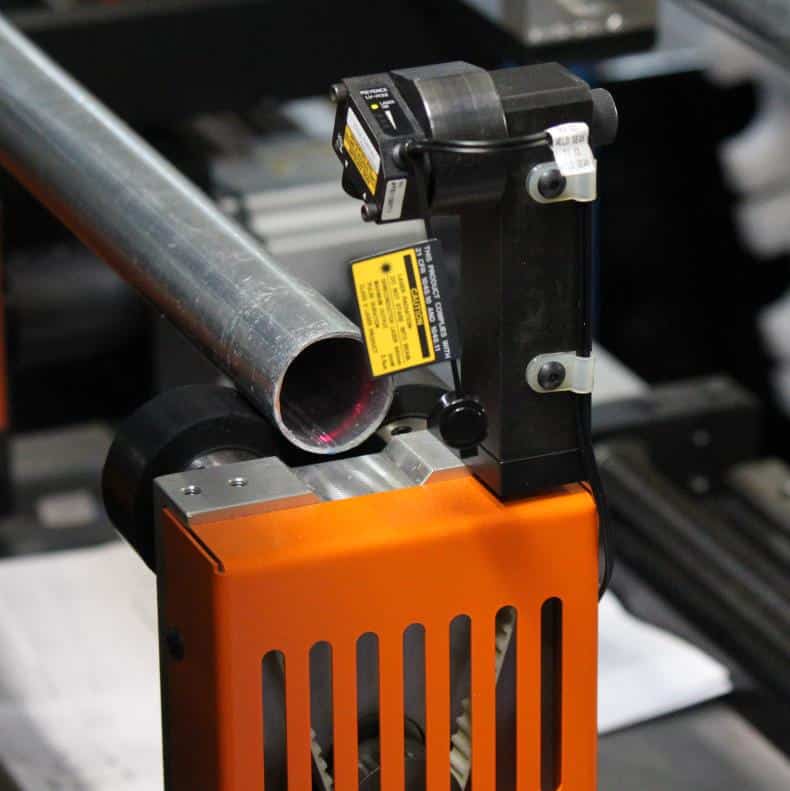Finding the Weld Seam in a Tube
Finding the weld seam in a tube can add consistency to a tube fabrication process
As much as a few stadium full loads of fabricated tubing every day makes use of steel tubing as the base material. A lot of this tubing has a weld seam within. Tubing that sports a weld seam is generally less expensive than a similar seamless equivalent. You will find tubing with a weld seam in lawn & garden products, health care products, and more. The list goes on and on.
When fabricating this type of tubing the position of the weld seam can become important when forming the tube. Forming can involve bending, punching, or even flattening the ends. In each of these operations clocking the weld seam before the first tool hits can be important.
For example, if you go to flatten an end and the seam just happens to be aligned on either fold, the material may split; see image below.
If weld seam falls on either flattened edge, the tube could split causing quality problems.
This is because the mechanical properties of the weld seam are not always the same as the properties of the rest of the tube. In the case of bending, if the weld seam is not oriented the same way every time, the bend angle may vary more than it would have if the weld seam were clocked consistently. So having a means to locate the weld seam can quickly be of great interest.
The Low Tech Approach – How the seam is detected often depends on the forming process. For example, if you are manually loading a CNC tube bender, the operator may be well suited to clock the weld seam when positioning the tube in the machine. This same technique could be applied to most tube fabrication processes. It’s simple yet operator dependent.
High Tech Approach #1– common to the fabrication of tubing itself, a device, known as an eddy current detector, this type of approach can detect the change in mechanical properties of a given cross section. Once detected, an output can be generated thus alarming a microprocessor of the change in the tube’s mechanical properties. The eddy current process can detect variations in alloy, heat treatment and other physical and metallurgical conditions. If you don’t have access to the inside of the tube, this process has been proven to work well. However, if you have access to the inside of the tube, then I would suggest continuing with this read.
High Tech Approach #2 – Quite often a fabrication process is working with a defined length. With a defined length in hand, at least one end of the tube is available for inspection…as was the case in the Low Tech Approach above. When the process dictates that an operator can’t be involved for the inspection phase of the process, you have to automate. Here is where you may want to consider a detector that can differentiate between light and dark. Why light and dark? Go pick up a piece of a tube with a welded seam. Can you see the weld seam? I don’t mean feel it…I mean see it. If you can see it with your eye then there may be a detector that can do it for you. An industrial type camera no doubt could do the trick. Maybe not quite as expensive as the eddy current approach, however, an industrial camera can provide the necessary feedback to find a seam. However, consider a detector that can quickly determine what is light and what is dark. Figure 3 shows a teachable sensor from Keyence.
The sensor is a contrast detection laser sensor. It recognizes differences in the amount of light reflected from a surface. The sensor head itself has an adjustable beam spot that can be adjusted by turning the nozzle tip on the head of the sensor. In the right application, this approach is the clear winner.
In the case of finding a weld seam, the Keyence sensor/detector does a fine job providing a contrast exists between the weld seam and the balance of tube. In the case of Figure 3, the tube is rotated about its center axis allowing the laser sensor to inspect the inside of the tube.
The above approaches are all different to say the least. It is your job to figure out which process will best generate an eye opening ROI.

George Winton, P.E. designs and builds CNC tube fabrication equipment for Winton Machine in Suwanee, GA. He can be reached at gwinton@wintonmachine.com or 888.321.1499.
About the Machines We Build
All of our semi-rigid coax and tube fabrication machines at Winton are designed, manufactured, and tested in-house. We have a large line of standard products as well as the ability to engineer the best solution for our customer’s needs. Our experienced sales staff makes sure that our customers can justify their capital equipment investment by offering a solution that is exactly what they need in order to manufacture their parts. Please contact us today to discuss your project.





